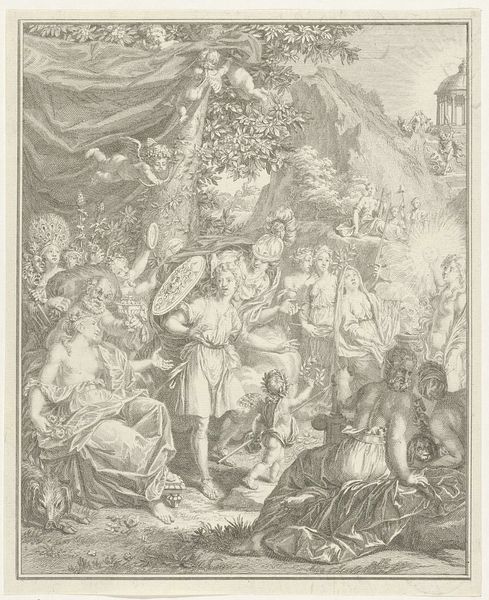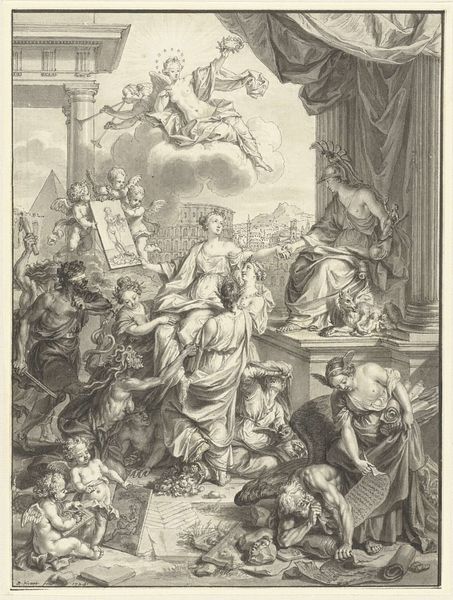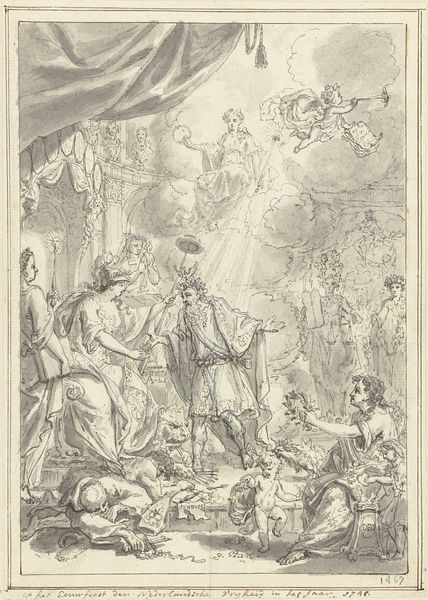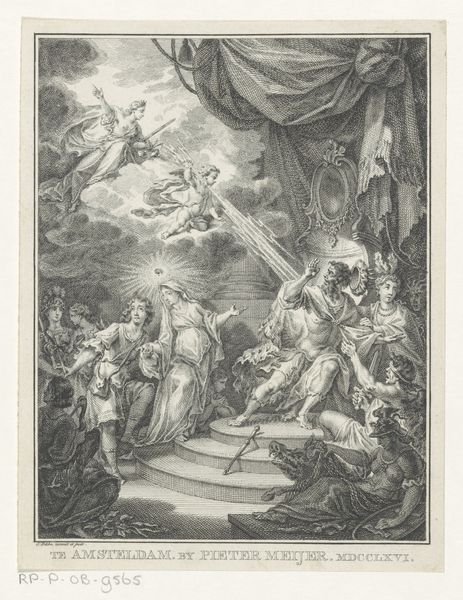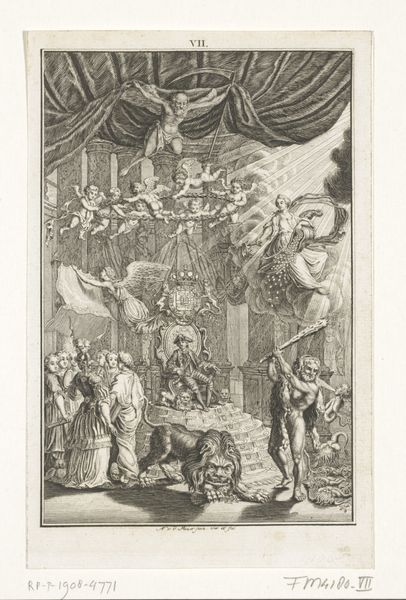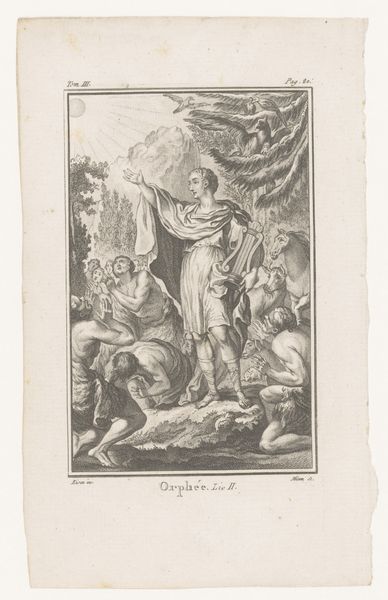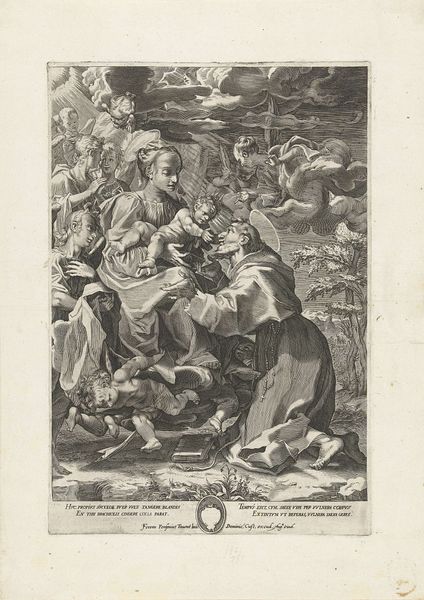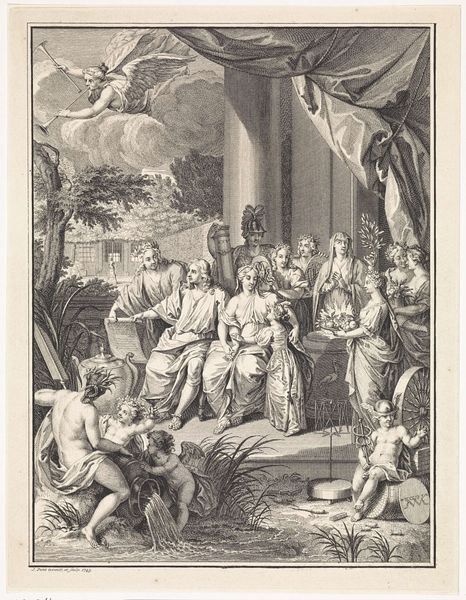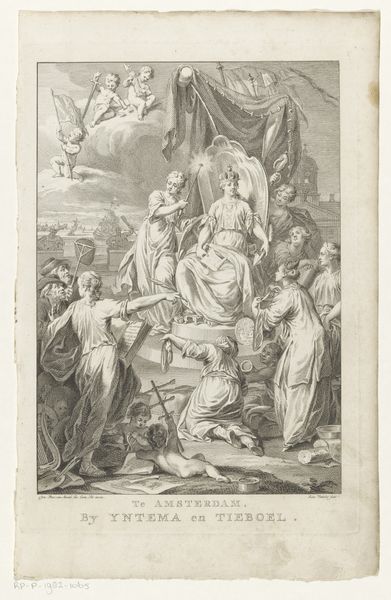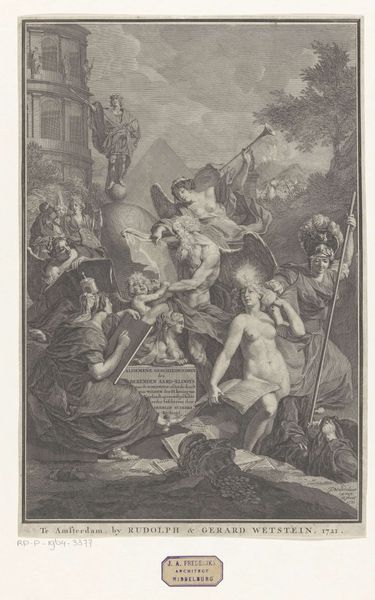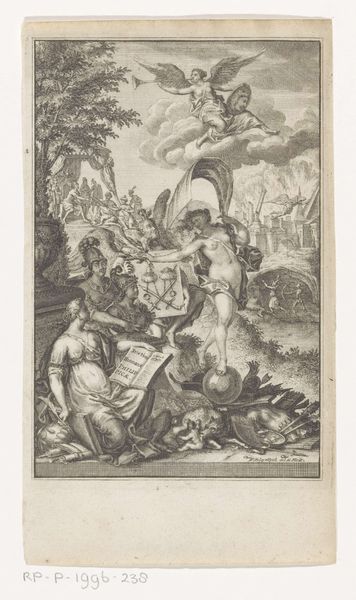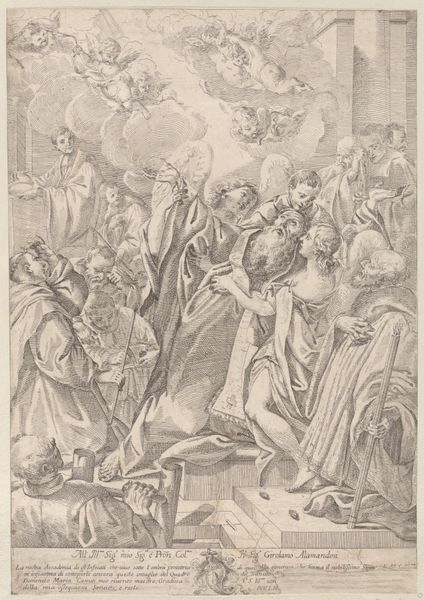
engraving
#
allegory
#
baroque
#
old engraving style
#
junji ito style
#
figuration
#
line
#
history-painting
#
engraving
Dimensions: height 244 mm, width 184 mm
Copyright: Rijks Museum: Open Domain
Curator: Before us, we have an engraving titled "Allegorische voorstelling met Telemachus en Minerva," created in 1733 by Jacob Folkema, currently residing in the Rijksmuseum collection. Editor: The linear quality is remarkable; a true display of Baroque finesse in monochrome. Though it feels overwrought, there’s a deliberate organization. Curator: The very dense arrangement is indicative of Baroque aesthetics, utilizing allegory and figuration—key characteristics of the style. See how Telemachus is guided by Minerva, away from earthly temptations, towards the Temple of Immortality. The print medium itself facilitated wider dissemination of such allegorical narratives. Editor: I find myself more intrigued by Folkema’s technical labor and his intricate methods of engraving that yielded this dense spectacle, creating minute detail. I'm also considering the socio-economic context; prints were increasingly accessible. What purpose did this elaborate allegory serve in society then? Curator: To clarify the print's meaning, virtues oppose the vices abandoned by Telemachus such as Intemperance, Envy, Treason, and Despair. Prudence, Fidelity, Truth, Piety, Peace, Justice, Freedom, Concord, and Strength—they mark the figures' identities and meanings with familiar allegorical motifs. This reflects the philosophical climate of the 18th century that values logic, knowledge and learning. Editor: Right, but those motifs also engage consumer culture—it would likely adorn the walls of educated bourgeois families and function as not just decoration, but a claim to higher values, a symbol of refined taste. It displays wealth through cultivated, artistic expression accessible due to evolving commercial markets of the era. Curator: Your observations emphasize its status as a material object. However, I remain fixated on its sophisticated interplay of virtue and vice embodied through these finely delineated lines. Note the radiant temple, juxtaposed with the dark figures wallowing in the left corner. Editor: That's a fair point. Still, seeing this piece helps to remember how visual artistry and ethical lessons worked in tandem within this culture, each informing how meaning was understood then—an understanding made accessible due to processes that facilitated production and distribution, enabling broad consumer engagement with ideas. Curator: It truly is an exceptionally illustrative reflection of Baroque moral sensibilities—quite a lot to unpack, visually and symbolically! Editor: Yes, a piece of printed matter that encapsulates prevailing beliefs and emerging consumer practices.
Comments
No comments
Be the first to comment and join the conversation on the ultimate creative platform.
